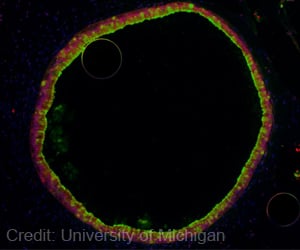Bay Area Lyme Foundation aims to make Lyme disease easy to diagnose and simple to cure, applauds new research.

"These results are critical as they offer proof that it is possible to become infected with Lyme disease in the Bay Area at any time of the year," said Linda Giampa, Executive Director, Bay Area Lyme Foundation. "It underscores the need for residents to take precautions year-round and know the symptoms of the disease. While the threat in Northwest California is lower, it's more constant than the Northeast USA."
The findings suggest that the timing of peak tick activity of Western Black-legged ticks (Ixodes pacificus), which are the ticks most commonly known to carry Lyme disease in Northwest California is largely predictable and year-round. In general, tick larvae (young ticks) are active April to June, and sometimes activity extends into October, while adult ticks are active from October to May. From January to October, nymphal ticks (which are younger and smaller than adult ticks but older than larvae) become active.
Interestingly, the highest reported incidence of Lyme disease in humans in Northwest California correlate to the times when the younger, smaller ticks (nymphal I. pacificus), which are smaller than a poppy seed, are most active.
"Based on these results, tick season in Northwestern California is longer than even we expected and quite different from patterns in the Northeast USA," said Daniel Salkeld, PhD, a Public Health Biologist formerly with the California Department of Public Health (CDPH) Vector-borne Disease Section, and currently a Research Scientist, Colorado State University. Dr. Salkeld was an author of the recent study published in a journal of the Centers for Disease Control (CDC) that found that ticks carrying the bacteria that cause Lyme disease, are widespread in the San Francisco Bay Area, which was funded by Bay Area Lyme Foundation. He is now supported by the Bay Area Lyme Foundation to continue research into the ecology of ticks and their pathogens in California.
Compounding the growing problem of Lyme disease in northwestern California is that the host animals that most commonly carry Lyme disease are also active throughout the year and often live for extended periods of time, compared to host animals in the Northeast United States. In the Northeast, few white footed mice, the host animals that most commonly carry the bacteria that causes Lyme disease in that region of the country, live through the cold winters. By contrast, the host animals that most commonly carry the bacteria that causes Lyme disease in California, western gray squirrel and dusky-footed wood rat often live longer than one year and can carry the bacteria throughout the year.
Advertisement
"Doing tick checks any day that you participate in outdoor activities is important prevention, and knowing that you can have Lyme disease even if you don't get the bull's eye rash is critical for residents," said added Giampa. Symptoms of the first stage of Lyme disease include headaches, flu-like symptoms, joint pain, fatigue and sometimes a rash that has many different shapes including one that may look like a bull's-eye centered on the tick bite. More prevention tips and a list of symptoms can be found at: http://www.bayarealyme.org.
Advertisement








